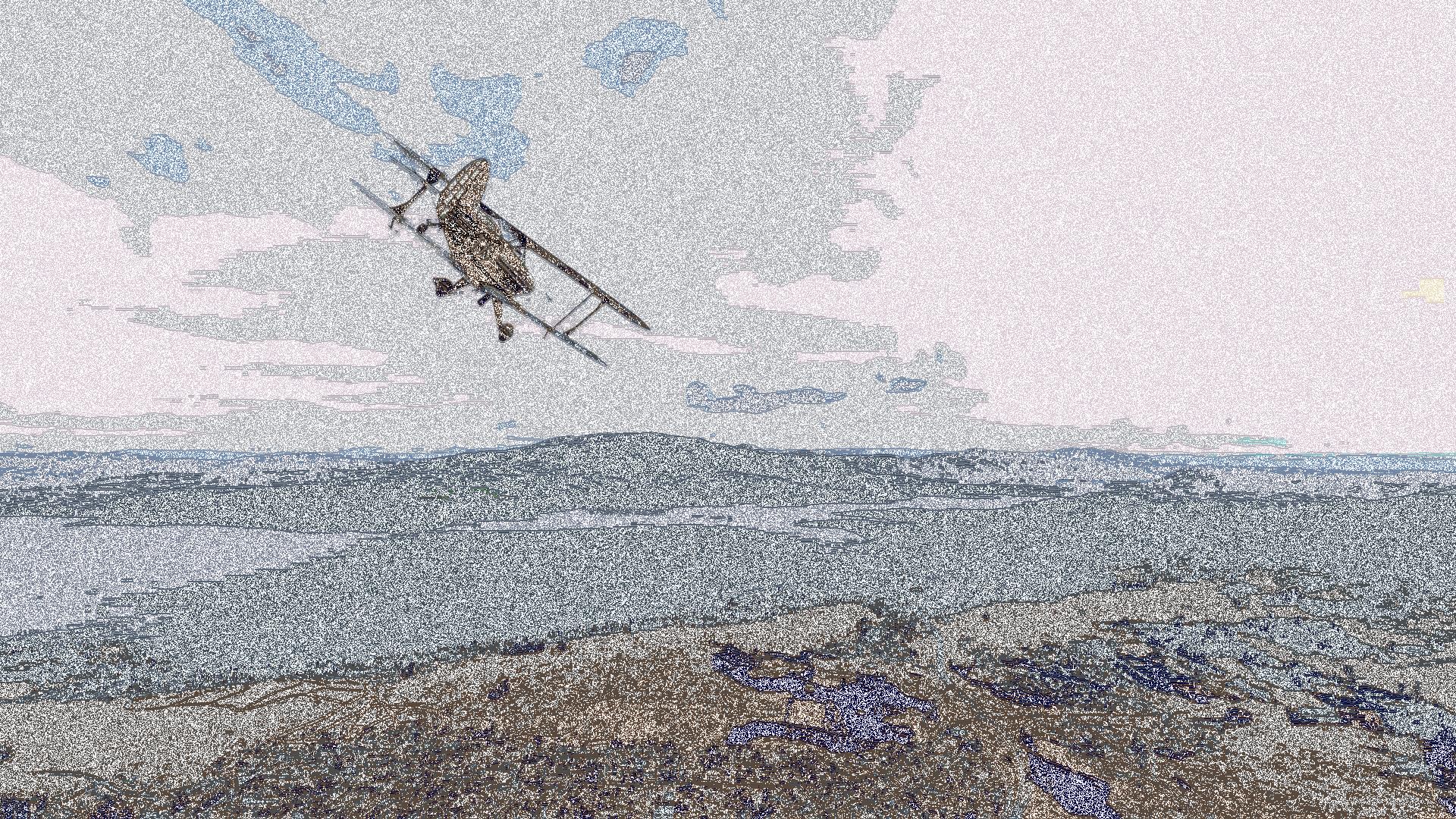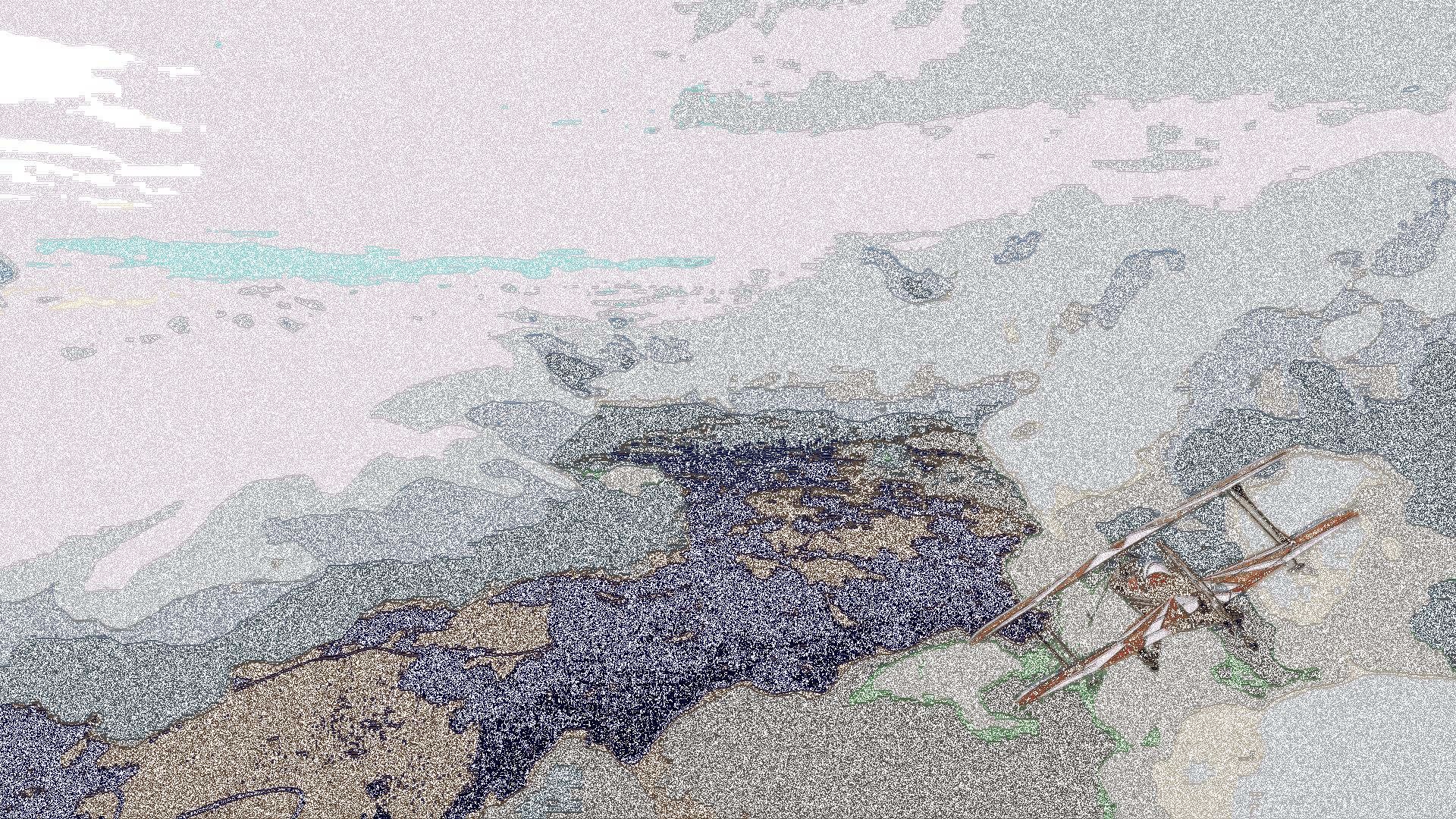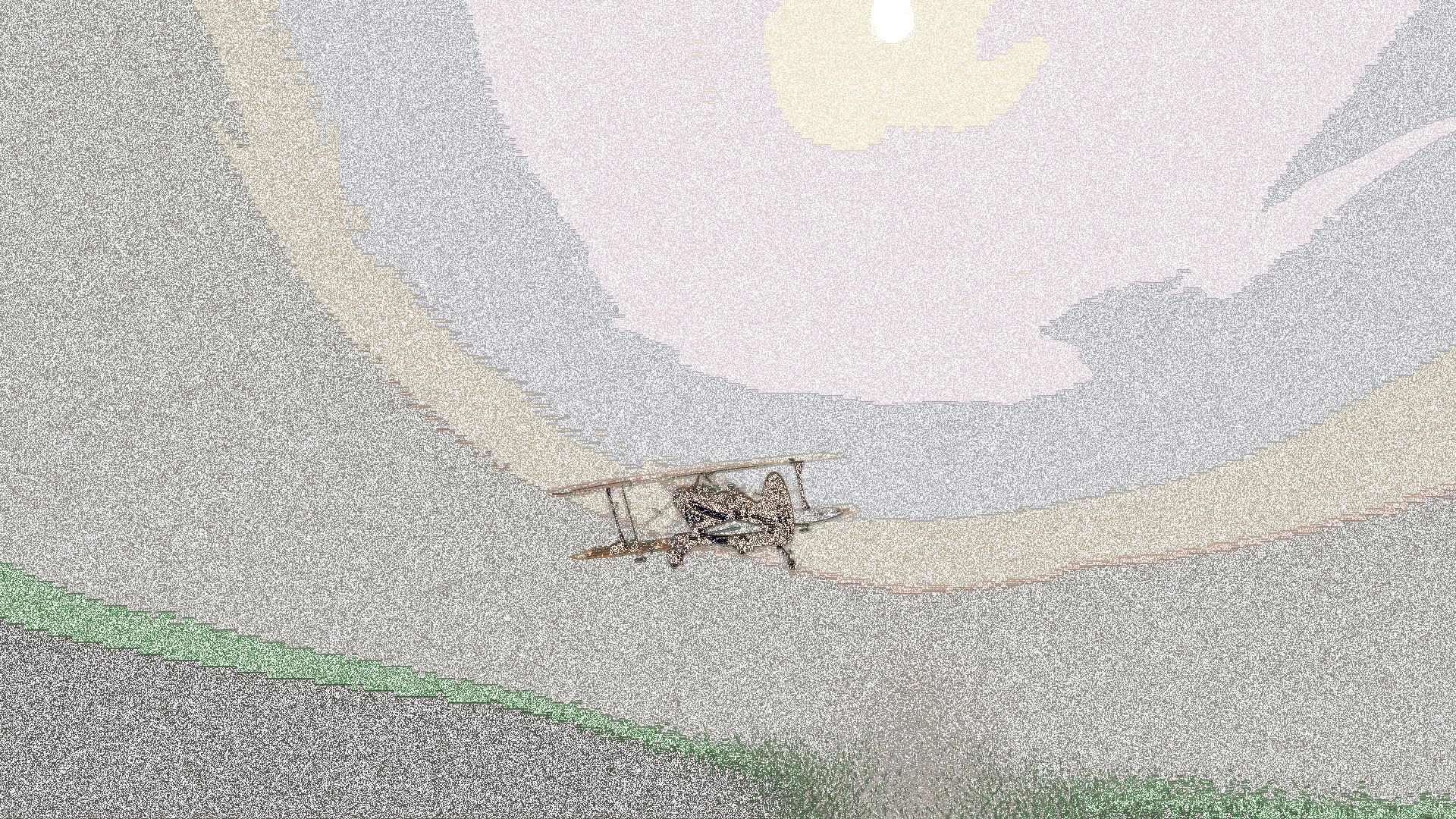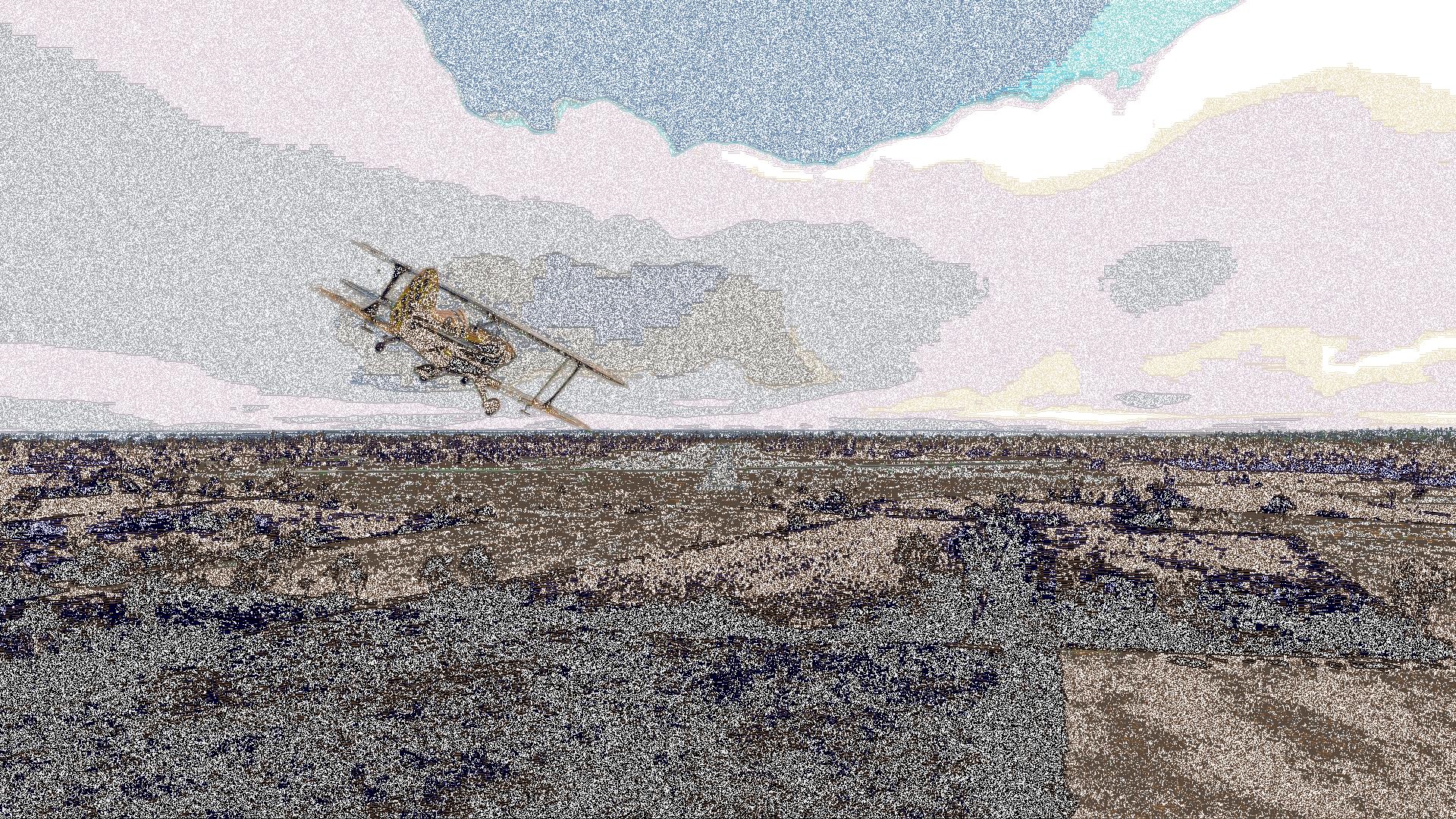King Island
and the wreck of the Cataraqui

A gloomy day for the flight to King Island. Perfect for a gloomy story. This is the story of the Cataraqui.
Ship building was alive in the early days of the 19th century in the Canadas. It was Canada's Age of Sail. Ships were being built for the vast inland seas of the Great Lakes, but also for the overseas market. By the time of the Crimean war, certainly, both Upper and Lower Canada were well placed to supply hospital ships, troop ships, war ships, really all manner of shipping, to help with the effort to keep Russia out of the Black Sea. But for decades prior to that conflict, as many as 4,000 ships exceeding 500 tons burthen were being built all around the colonies, making the Canadas the fourth largest builders of ships, by tonnage, in the world.
The first ocean going vessel built in Upper Canada was the Barque the Reindeer, built in about the most unlikely place you could imagine for the building of a ship destined for the Atlantic, the little village of Coldwater. Coldwater is on a very small river, or maybe a large creek, which winds its way to Georgian Bay on Lake Huron. Georgian Bay is six hundred miles by water from Toronto, which is then another four hundred fifty miles from salt water at la Ville de Québec. Somehow, Peter Lamoree managed to build a 138 foot, 348 ton, three masted Carvel in the village on the creek and tow it down to the bay where it was rigged and readied. It was loaded up with Black Walnut enroute to Toronto, and then off to England to be sold, cargo and all.
Lamoree had gone to "the bush" to build his boat because that was where the Oak was. The trouble, of course, was that all of the shipwrights and fittings and rigging were down south in civilization. At least the Second Welland canals had been built by this time. They were ten feet wider than the First, at twenty-six feet, so they could just accomodate Lamoree's barque and its twenty-five and a half foot beam. Otherwise his ship would have remained in Lake Huron for the rest of its life, trapped upstream of the falls on the Niagara River. Once in Toronto, it again would have found itself forever trapped in the Great Lakes were it not for the canals and locks to get around the Lachine rapids, near Montréal. But the canals were something of a later arrival for shipping on the Great Lakes.
Prior to the opening of the Lachine Canal at Montréal in 1825, and the Welland Canal in 1829, if you wanted a ship on Lake Ontario, you had to build it in situ. A government wharf had been in operation at Cataraqui at the eastern end of the lake since shortly after the American Revolution, receiving loyalists fleeing oppression south of the border. But Cataraqui (a corruption of Katerokwi, the Anishinaabe name for the region around what is now Kingston, Ontario) had always been perfect for shipbuilding. It had abundant timber and a large natural harbour, the "Inner" harbour. It was the place to build ships on Lake Ontario, and had been since 1678 when René-Robert Cavelier built the first of many ships to be named the Cataraqui here. So with escalating tensions between the British and the Americans, the Royal Navy Dockyard was built at Point Frederick at the confluence of the Cataraqui and St. Lawrence rivers in 1788. One year later it started building ships.
The war of 1812 was a sort of a triangle, between Britain and France on one side of the Atlantic, and between Britain and the U.S. on the other. The U.S. war was fought largely around the borders between the previous New England Colonies and the current colonies of Upper and Lower Canada, and it was considered a shipbuilders war. The only tangible barrier between the two sides was the immensity of water that is the Great Lakes and the St. Lawrence river, so ships of war were to be fundamental in the defence of the Canadian colonies. The dockyards at Cataraqui were the only Royal Navy Base on Lake Ontario, and vital to its defense. The opposition was based at Sackets Harbour, not even thirty miles to the south. So there was quite a building boom at Cataraqui. At the beginning of the war the Provincial Marine had twenty guns on four vessels. By the end of the war they had 518 guns on twelve ships, including the St. Lawrence, a three decker mounting 102 guns.
The treaty of Ghent saw the peaceful resolution of conflict between the U.S. and the U.K. on Christmas Eve, 1814. There was no longer any need to build ships of war in large numbers at Cataraqui, and by the 1830s most of the remaining ones were auctioned off as hulks. Meanwhile, the canals had been completed meaning that ships need no longer be built on Lake Ontario for use in Lake Ontario. Shipbuilding at Cataraqui went into a bit of a decline. But it was still flourishing in traditional shipbuilding centers such as Québec in Lower Canada. And so John Bell Forsyth, whose family had lived in the Cataraqui area since 1784, and who had great financial interests in timber and the building of ships, moved to la Ville de Québec in 1831. There he built the Cataraqui Estate, and continued his business of importing timber from Upper Canada, thereby securing interests in the local shipbuilding industry.
William Lampson was a ship builder in Québec at the time, and therefore made the aquaintance of Forsyth. They had many mutual interests over the years, including being shareholders together in the Royal William, a fine story for another day. But for today's story, Lampson was the shipbuilder who built the Cataraqui. She was built in Québec in 1840 from Oak, Elm, Hackmatac, Birch and Red Pine. She was a 712 ton (burthen) barque; 802 tons using the new measurement. She was 138 feet long and 30 feet wide. Being a barque, the ship had square rigging. That would make her somewhat easier to sail, allowing for smaller crews. A barque can outperform a full-rigged ship when running with the wind, but it is poorly suited to contrary winds. All in all, the Cataraqui was built to be a workhorse cargo ship.
History is somewhat quiet about her first five years of service, but in 1845 she was sold to Smith & Sons of Liverpool, England and arrived in the graven (dry) dock in March of 1845. There she was fitted with extra decks and water capacity, recoppered and essentially converted from a cargo ship to a passenger ship, "for the purpose of conveying to Port Phillip the residue of the emigrants they were entitled to send out under the Bounty Contract of 1843.". She was going to be transporting assisted emigrants to Australia.
Assisted emigrants were the poor. The Poor Law of 1601 separated the poor into three groups - the Helpless Poor: those who were old, young, sick, or perhaps disabled; the Able Bodied Poor, those who wanted to work but could not find employment; and the Rogues and Vagabonds, or beggars. The first group was helped with food and money, maybe an apprenticeship for poor children. The money came from the Poor Rate - a tax levied on landowners within each parish for the express purpose of taking care of the "deserving poor" within their parish. The second group, the able bodied, were given work in a Poor House, a workhouse where they could earn a living of sorts until they could find their own employment. Sometimes this group was given a legitimate license to beg. The last group, however, the Rogues and Vagabonds, were whipped, sometimes hanged, some had their tongues branded and became slaves. The Poor Law worked after a fashion as it kept the streets clear of unlicensed beggars at least. But it was cripplingly expensive to maintain, at least in the eyes of landowners who were paying for it.
The Poor Law Amendment Act of 1834 sought to reform the Poor Law and make it more efficient and less costly. There was one option for the poor under this system: workhouses. And the conditions of the workhouses were to be such as to deter any but the truly destitute from applying for relief. These were the workhouses of Charles Dickens. They were certainly cheaper to run than the previous system, although they were still funded by the parishes through a Poor Rate and each parish was still responsible for its own poor. So the parishes were greatly motivated to find a more permanent solution to the poor problem. Transport worked with criminals. Why not the poor?
Hand bills were printed up and distributed throughout the United Kingdom by the various parishes. These handbills promoted the new territories of Australia and New Zealand where anyone could "bring up your families free from the gripping curse of Poverty, and may, by industry, in a few years become INDEPENDENT LANDOWNERS." Free passage was offered to any person of good character; that was any person who was currently on the poor roles; with promises of every arrangement being made "conducive to your comfort while on the Voyage and after you Land."
Between 1815 and 1840, 58,000 immigrants arrived in Australia, about one third of them having paid at least a part of their own way, the rest being assisted poor. Upon arriving in Australia some found life to be good. The class system never properly took hold in Australia, and everyone who worked hard, even the Irish, were full members of society. Some found life to be hard. Work could be found in the mines and the factories for anyone aged four and up. The workday was 14 hours long and the work week was 6 days. But generally, life was much better in the colonies than it was back home and immigrants would write home encouraging friends and family to make the journey. Some even paid a bounty to ensure their people went to the top of the list. The governments of the Australian colonies too would pay a bounty for skilled labourers because there was a horrible shortage of them, with the convict ships trickling to a halt. Of course, however it was paid for, the journey would be made by boat. Which brings us back to the Cataraqui.
By the 15th April, 1845, the Cataraqui was fully refitted and ready to make the two, three, or, more likely, four month journey from Liverpool to Australia. There were 44 crew including captain Christopher Findlay, and 367 emigrants (including 73 children) as it set sail on the 20th. The emigrants had been split up and assigned to cramped "messes" of eight to ten people based on class, ability to pay, marital status and gender, at embarkation. Generally speaking, one in ten of those emigrating to Australia could afford "first class", and another two in ten could afford some lesser accommodations. But mostly people couldn't afford anything at all and were sponsored by their parishes and/or someone in the colonies. They were confined to steerage quarters that would probably hold cargo on the return voyage. There would be bunks along the walls and a table in the middle. There would not be any portholes; in fact, most steerage quarters were below the waterline. It was always dark and stank; there was no air circulation. An emigrant's day, assuming they were not in some paid class, would begin at 6:00 AM with washing, dressing and tidying up before breakfast. They would then cook their own breakfast and clean up afterwards. Then they would move on to their daily chores - cleaning berths, scrubbing decks, anything manual that could be done on board a ship that did not require the skills of a sailor. Lights out would be at 10:00 PM. And this was the routine, day after day.
After 92 days of this routine, in the Southern Ocean, the Cataraqui was besieged by "a strong gale of wind from the north-west to the south-west, and incessant rain.". Up until this point, the voyage had been largely uneventful. One crew member had been lost overboard. Six babies had died, but 5 more had been born. So there were 409 souls on board when the order was given to "heave-to", essentially parking the ship. This was on the night of Sunday 3rd August at 7:00 in the evening. Captain Findlay had not been able to take any observations by octant, or he may have had the newer sextant, for four days at this point. Dead reckoning told him that he was 60 or 70 miles from King's Island but the seas had been "mountainous" so it seemed prudent to remain hove-to and wait out the storm. He was off course by 100 miles but he didn't know it.
At around the first bell of the morning watch, about 04:30 in the morning of the 4th of August, 1854, the Cataraqui struck a reef off the west coast of King Island. Within minutes there were four feet of water in her holds. The passengers all panicked and started rushing up on deck from below, but the wrenching of the ship began breaking all of the ladders and most were trapped below. The crew, who "to a man were on deck the moment the ship struck" began grabbing passengers and hoisting them up on deck, where their fortunes were not that much better than they were below. The water was now breaking over the larboard (left) beam, sweeping the decks, and with every sea it was taking away passengers and crew. The ship began breaking up, and within a half an hour of striking the reef she careened over on her larboard side, drowning all who were still below decks. Captain Findlay gave the order to cut away the masts in the hope that the ship would right itself, but that was to no avail. So he gave the order for everyone to cling to anything that was above water and try for shore at day's break.
When the day finally came, the dead were floating around the ship, or smashed onto the rocks of the nearby shore. As many as two hundred survivors were clinging to bits of the ship, but this number was lessened with every wave. The upper deck began to break apart and wash away. The remaining survivors grabbed at bits of rope and tried to construct one large rope, hoping to get at least one sailor safely to shore to fix the rope to something, and make a line that people could use to also get to shore. The rope, however, kept getting tangled in seaweed and the effort had to be abandoned.
By late afternoon the wreck broke apart near the front, and any of those clinging on behind the break were lost. There were now perhaps seventy left alive, clinging to the forecastle. The rope they had constructed was used to lash people to the wreckage, and many drowned in that fashion, lashed to the wreckage of the ship as it tumbled about in the waves. The rest quickly untied themselves. Chief Mate Thomas Guthrie, who had been clinging to the sprit sail yard, was washed out to the bowsprit. From that vantage point he could see that there were perhaps twenty left alive, including the captain and second mate. As he was about to be washed overboard, he grabbed a piece of planking and, between it and the wave, was propelled over the reef and towards shore. He was helped ashore by a passenger who had miraculously made a similar journey in the darkness of the previous night, one Solomon Brown. In short order, they were joined by John Roberts, able seaman; William Jones, able seaman; Francis Millan, able seaman; John Simpson, able seaman; John Robertson, able seaman; Peter Johnson, able seaman; and William Blackstock, apprentice. The rest of the Cataraqui then disappeared taking with her everyone else still alive. These nine survivors out of 409 then set about continuing to survive.
All they had was what was washing ashore from the wreckage, and that was mostly dead bodies. They did have some luck the next day, however. They found a tin of preserved fowl, and a throroughly soaked blanket. They then found a cask of water. Between these finds they were able to stay alive until the next day, when they were discovered by David Howie. Howie had been somewhat marooned on the island himself when his own boat was wrecked, but was nonetheless well supplied and catching seals while waiting for rescue. With his help, the survivors of the Cataraqui built a shelter and aquired the means of making fire, as well as enough food to see them safely through to the arrival of the Midge, on Sunday September 7th. They had been spending their time burying the dead.
And that is the story of the Cataraqui, the worst peacetime maritime disaster in Australian history.
 So let's drive up the length of Tasmania and see King Island.
So let's drive up the length of Tasmania and see King Island.
|
 The Bass Strait, a great shortcut for getting to Australia if you're driving a square-rigger. Clippers would go further south to catch the screaming sixties which give you better mileage than the roaring forties.
The Bass Strait, a great shortcut for getting to Australia if you're driving a square-rigger. Clippers would go further south to catch the screaming sixties which give you better mileage than the roaring forties.
|
 Miles of nothing on the way to King Island.
Miles of nothing on the way to King Island.
|
 Welcome to King Island.
Welcome to King Island.
|